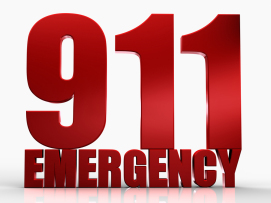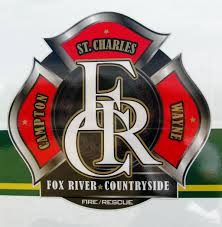When Kane County Emergency Communications Deputy Director Michelle Guthrie emailed the KaneComm team about starting a “tip of the month” for Kane County Connects, you might have thought she was talking to real estate agents, because the answer she received was location, location, location.
KaneComm telecommunicators said the one piece of information they often don’t get quickly or clearly enough is the emergency location. The sooner that information is provided, the more quickly a police officer, ambulance or fire truck can respond.
Tip of the Month
When dialing 9-1-1, the first question the dispatcher will typically ask is the location of the emergency. Please provide this information FIRST. Your call may need to be transferred to another 9-1-1 center, especially when you are dialing 9-1-1 from a cellular phone.
Related Questions
- Why does a call sometimes need to be transferred to another 9-1-1 center?
KaneComm handles all emergency and non-emergency calls for assistance for 10 police and seven fire agencies in Kane County. The location of the emergency may be in a jurisdiction not serviced by KaneComm. Or, the caller may be in KaneComm’s jurisdiction, but the information the caller wants to report is in another part of the county, state or even country.
- Why is providing a location “especially” important when the caller is using a cellular phone?
Wireless phones are a great tool, but they also create a unique challenge for first responders. Wireless phones are mobile, so they are not associated with a fixedlocation or address like a landline phone. The location of the cell site closest to the 9-1-1 caller may provide a general indication of where the caller is, but that information is not always specific enough for first responders to locate the caller quickly. Factors such as the weather, terrain and buildings may affect wireless service and the ability to calculate the caller’s location, particularly for wireless 911 calls placed indoors.
- What’s the best way to give a location?
Be as specific as possible. An address is best. If there’s not an address available, the street name and nearest cross street (or intersection) is needed.
Wrong: “I just saw an accident on Route 47.” Route 47 is too broad, so the telecommunicator will ask for a cross street.
Right: “I just saw an accident on Route 47. The nearest cross street (or intersection) is Beith Road.”
- Is it better to say numbers as one? (“One. Two. Three. Main Street, Batavia” or “One twenty-three Main Street”) or doesn’t it matter?
Either way is fine, as long as the address is provided. The telecommunicator will usually ask the caller to repeat the address for verification.
- Do I need to provide a zip code?
No zip code needed.
Related Tips
- Stay calm.
- Wait for the call-taker to ask questions, then answer clearly.
- Do not hang up until the dispatcher says it’s OK to do so.
- If you get disconnected while talking to 911, always try to call back
- Do not nod your head while talking. Instead, answer “yes” or “no” out loud.
Want More Info?
KaneComm recommends these websites:
- KaneComm web page
- 911.gov — National 9-1-1- Office
- icc.illinois.gov/911/ — Illinois Commerce Commission’s 9-1-1 Program
- www.il911info.org
- www.911callers.com
About KaneComm
 Kane County Emergency Communications (KaneComm) is a multi-jurisdictional dispatch center responsible for the deployment of several police, fire, and medical agencies located within Kane County. KaneComm personnel are tasked with all of the incoming emergency and non-emergency calls for assistance from citizens residing in these jurisdictions. Subscribers to KaneComm include the Kane County Sheriff’s Office, police departments from Wayne, Gilberts, Hampshire, Maple Park, Pingree Grove, Campton Hills, Fox Valley Park District, Kane County Forest Preserve District and South Elgin, and the fire districts of Burlington, Hampshire, Maple Park, Pingree Grove, Fox River, Big Rock and Kaneville. For more information, visit the KaneComm web page.
Kane County Emergency Communications (KaneComm) is a multi-jurisdictional dispatch center responsible for the deployment of several police, fire, and medical agencies located within Kane County. KaneComm personnel are tasked with all of the incoming emergency and non-emergency calls for assistance from citizens residing in these jurisdictions. Subscribers to KaneComm include the Kane County Sheriff’s Office, police departments from Wayne, Gilberts, Hampshire, Maple Park, Pingree Grove, Campton Hills, Fox Valley Park District, Kane County Forest Preserve District and South Elgin, and the fire districts of Burlington, Hampshire, Maple Park, Pingree Grove, Fox River, Big Rock and Kaneville. For more information, visit the KaneComm web page.




 For those who are not familiar with Illinois governing system or who have recently moved from a city, living in this unincorporated area may be a bit confusing. While our address is ‘Saint Charles’, we do not live in the city boundaries and are not covered by city services (nor do we pay city taxes!). This address designation is determined by the Post Office and is a throwback to the fact that we are in St. Charles Township.
For those who are not familiar with Illinois governing system or who have recently moved from a city, living in this unincorporated area may be a bit confusing. While our address is ‘Saint Charles’, we do not live in the city boundaries and are not covered by city services (nor do we pay city taxes!). This address designation is determined by the Post Office and is a throwback to the fact that we are in St. Charles Township.
